In the given circuit, the AC source has (ω)=100rad/s. Considering the inductor and capacitor to be ideal, the correct choice(s) is (are)
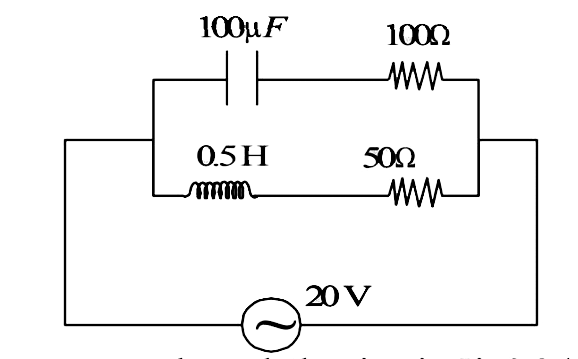 .
.
The current through the circuit , I is 0.3 A
The current through the circuit , I is 0.3√2 A
The voltage across 100Ω resistor = 10√2V
The voltage across 50Ω resistor = 10 V
The correct Answer is:A, C, D
XL=ωL=10×0.5=50Ω
XC=1ωC=1100×10010−6=100Ω
Z1=100√2,I1=20√100√2=15√2
V across 100Ω = 15√2×100=20√2×√2√2 = 10√2 V
Phase difference between I1 and V, cosϕ1 = R1Z1=100100√2
⇒ϕ=π/4
Therefore, I1 lead V
Z2=50√2,I2=2050√2=25√2 A
V across 50Ω=250√2×50=20√2=10√2V⇒ϕ2=π4
I2 lag V by π4
⇒INet=√I21+I22
I = √125×2+225×2=√550=1√10⇒I=0.316 A
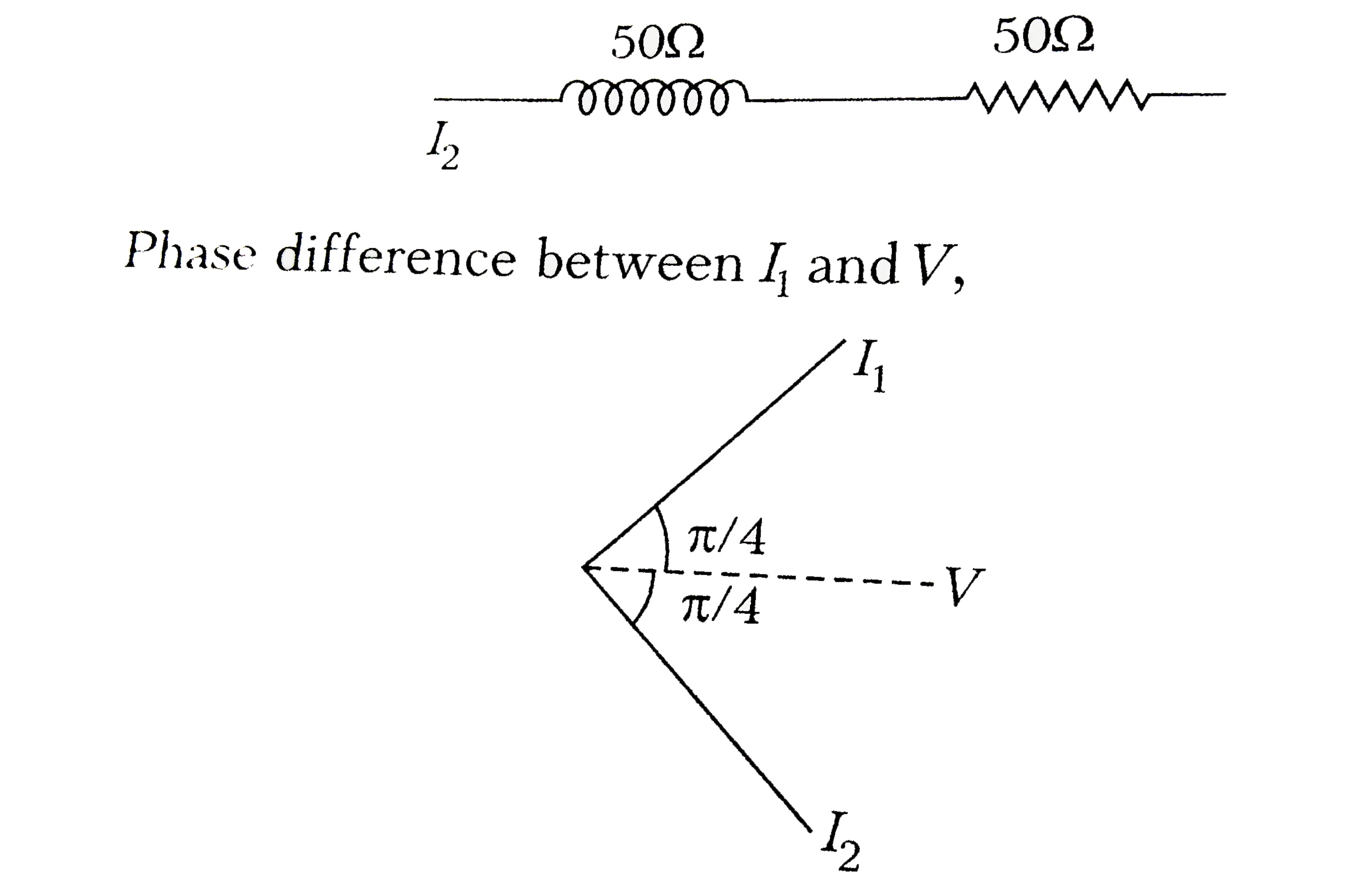
Similar Questions
In the given circuit, the AC source has ω=50rad/s. Considering the inductor and capacitor to be ideal, the correct choice (s) is (are):
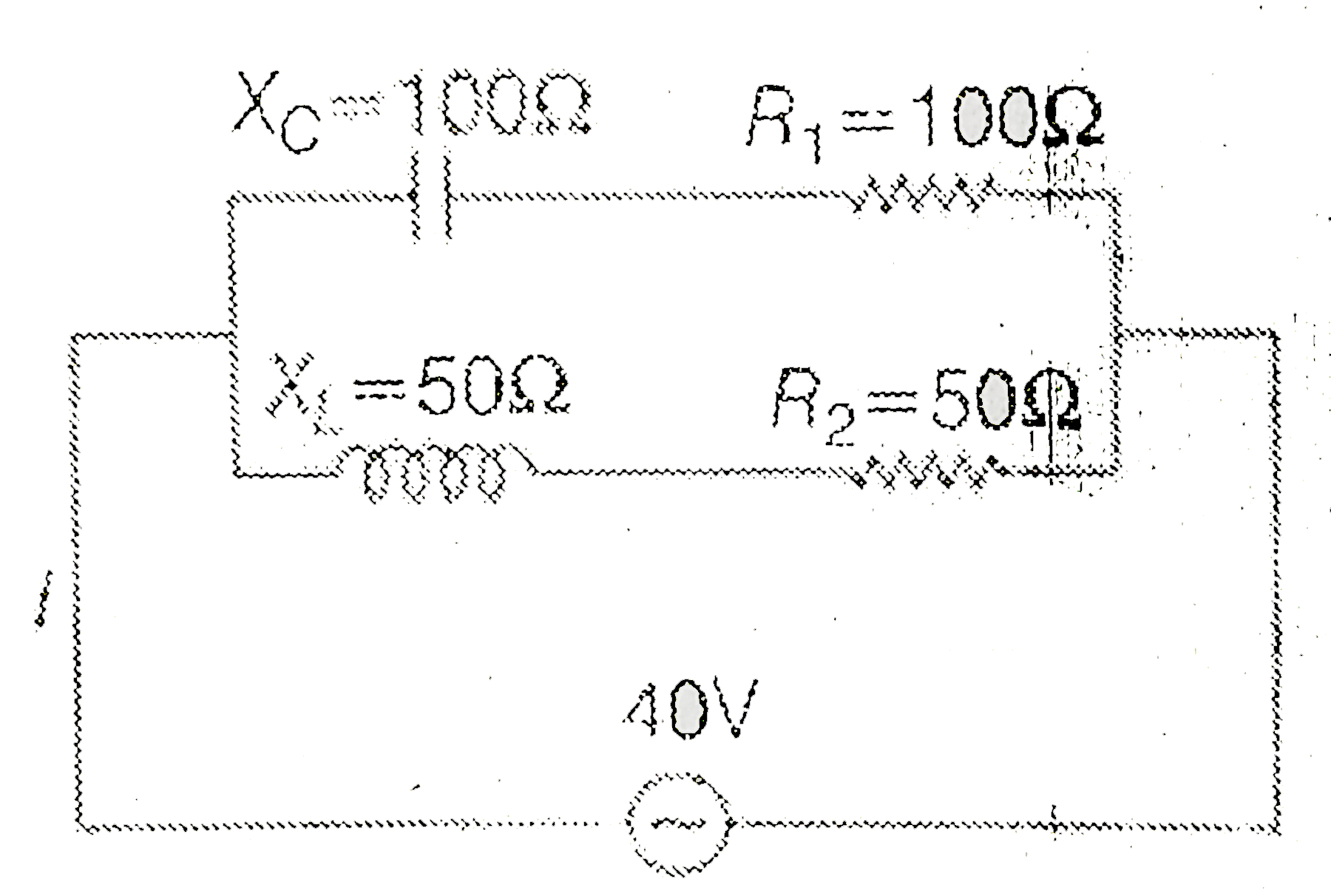 View Solution
View SolutionIn the given circuit, then AC source has ω=50rad/s Considering the indcutor and capacitor and capacitor to be ideal, the correct choice(s) is (are):
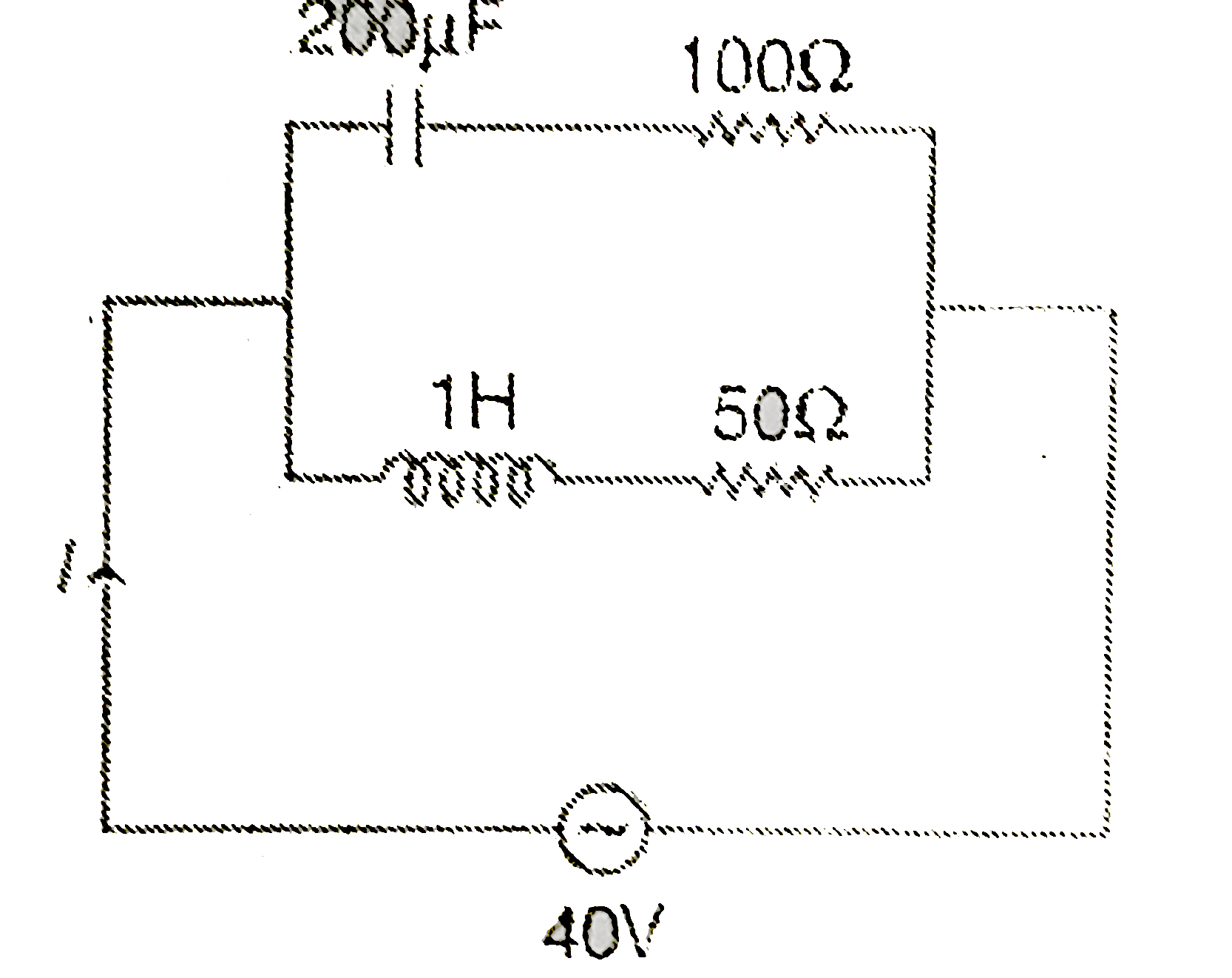 View Solution
View SolutionIn the circuit of fig, the source freqency is ω=2000rads−1. The current in the will be
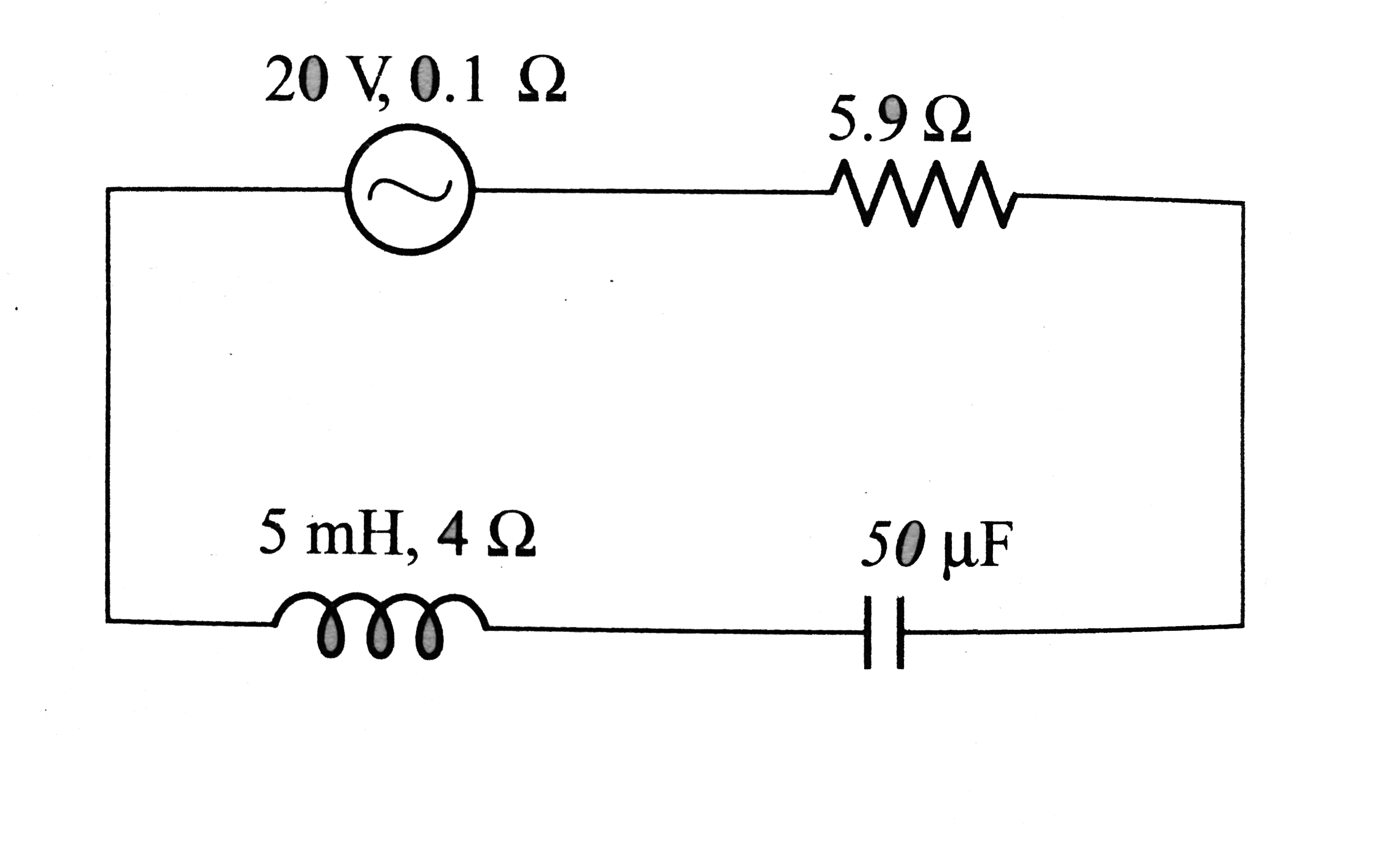 View Solution
View SolutionConsider the given circuit.Initially there is no energy stored in inductor and capacitor.At
View SolutionConsider the given circuit.Initially there is no energy stored in inductor and capacitor.At
View SolutionIn the circuit shown, the battery, the ammeter and the voltmeter are ideal. Pick the correct choice(s) :
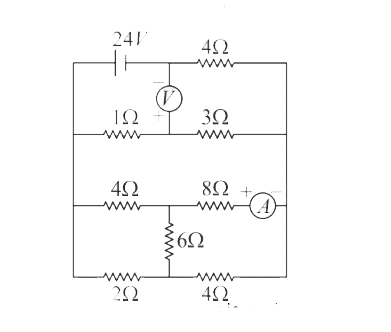 View Solution
View SolutionIn an a.c. circuit, there is no power consumption in an ideal inductor. Explain.
View SolutionIn the circuit below, the AC source the voltage V=20cos(ωt) volts with ω=2000rad/sec. The amplitude of the current will be nearest to
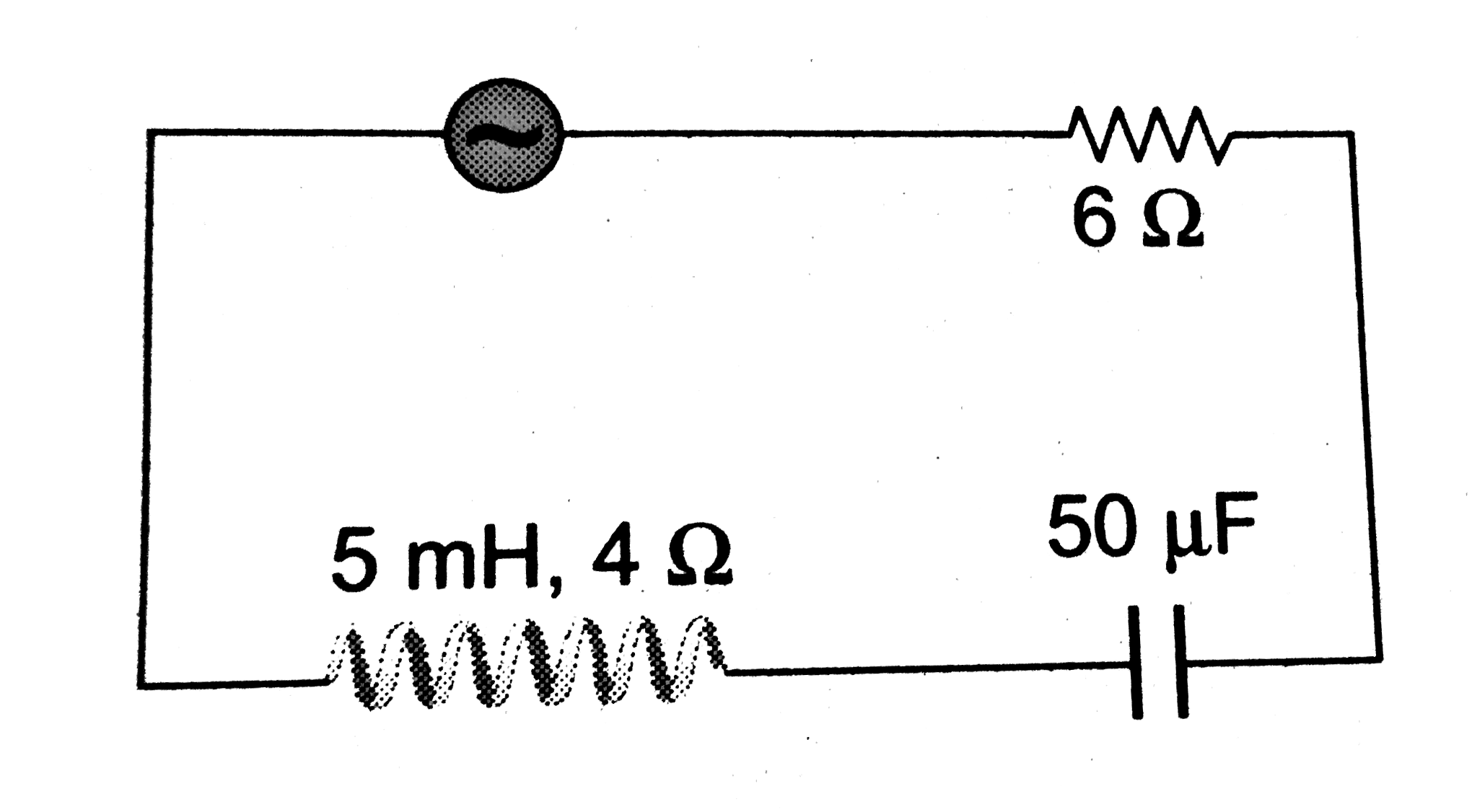 View Solution
View SolutionProve that an ideal capacitor in an a.c. circuit does not dissipate power.
View SolutionProve that an ideal capacitor in an a.c. circuit does not dissipate power.
View Solution

